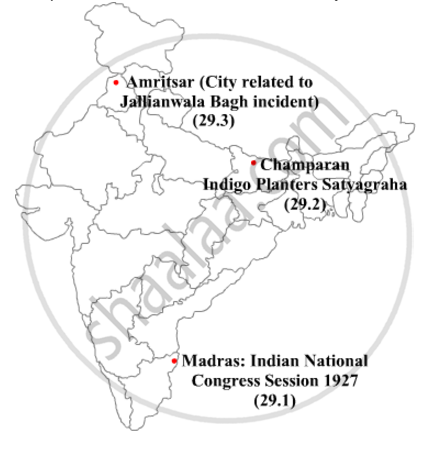Advertisements
Advertisements
Question
Three features A, B and C are marked on the given political outline map of India. Identify these features with the help of the following information and write their correct names on the lines marked in the map
A. The place where the Indian National Congress Session was held.
B. The place associated with peasant's satyagraha.
C. The city associated with the Jallianwala Bagh incident.

Solution
The places are indicative of nature. So if you have selected any of the following places, you are correct in your choice.

APPEARS IN
RELATED QUESTIONS
Describe the spread of Non-Cooperation Movement in the countryside.
Explain any five major problems posed by the First World War in India.
Name the place where the Indian National Congress Session was held in September 1920.
“The plantation workers in Assam had their own understanding of Mahatma Gandhi and the notion of Swaraj”. Support the statement with arguments.
How (nationwide satyagraha against the proposed Rowlatt Act 1919) was it organised?
Describe any three major problems faced by the peasants of Awadh in the days of Non Cooperation movement.
In which one of the following places Mahatma Gandhi organised Satyagraha for the first time in India?
Two features A and B are marked in the political outline map of India. Identify these features with the help of the following information and write their correct names on the lines marked in the map:
(A) The place where the Indian National Congress Session was held in September 1920
(B) The place where the cotton mill workers Satyagraha was organised in 1918
Identify these features with the help of the following information and write their correct names on the lines marked near them.
- The place where the Indian National Congress Session was held.
- The city where the Jallianwalla Bagh incident took place.
Answer the following question.
How did the Non-Cooperation movement start with the participation of middle-class people in the cities? Explain its impact on the economic front.
